
If you are growing green beans, you might be finding that the leaves are more holes than foliage – and the pods aren’t in much better shape. The culprit is likely the bean leaf beetle, Cerotoma trifurcata. This chrysomelid beetle is an occasional pest of snap beans and soybeans throughout the southeastern U.S. Beetle activity tends to be heavier in areas of concentrated soybean production, but they will still find beans in isolated garden plots.
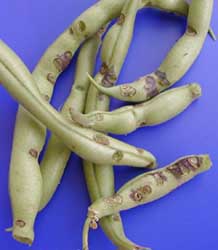
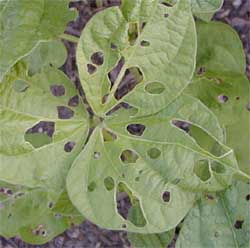
Adult beetles chew round holes in the leaves of beans, peas, cowpeas, soybeans, corn and related weeds. They prefer young, tender tissue, and can kill seedlings and young plants when numerous. Older bean plants can tolerate some feeding damage (15-30% depending on the stage of development), but extensive defoliation will reduce yields. The beetles also create roughened lesions on pods, which dramatically reduces the quality of the pods and may serve as an entry point for fungal diseases. Since pod damage is usually limited to the outer layers of the pod, if you’re growing the beans for shelling, the damage may not be too harmful. The larvae feed on the roots, but really only do significant damage on seedling plants.
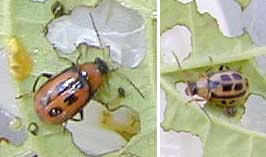
Adult bean leaf beetles are about 1/4 inch long and somewhat variable in color – they can be anywhere from red to yellowish-green to brown. They usually have four black spots on their back, as well as a black band around the outer margin of the wing covers, and a small black triangle behind the head. They may not be readily apparent on your bean plants because they generally feed on the underside of the leaves or where another leaf overlaps, providing some cover, and tend to drop to the ground when disturbed.
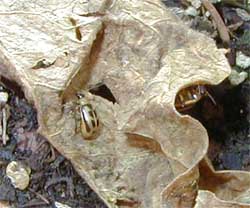
The bean leaf beetle overwinters as an adult near the soil surface, under leaves or other debris in or near bean plantings. They emerge in mid-May to early June, and start to feed before mating. Females lay their small, orange eggs in small clusters around the base of the plants. The eggs hatch in one to three weeks, and the whitish, worm-like larvae feed on the roots and underground stems for about 30 days before pupating in an earthen cell. The adults emerge about in about a week. There are normally two generations per year; adult of the first generation appear in early summer and the second generation appears around late August or early September.
Controlling bean leaf beetle is not always easy. Planting beans later may reduce early season bean leaf beetle damage. If the adults have nothing to eat when they emerge, they may leave before your been seedlings emerge. However, adults may migrate in after the beans come up. Row covers can provide a physical barrier to these insects, but they must be put on before beetles get onto the plants.
Foliar insecticides are effective for controlling bean leaf beetle, but plants must be thoroughly covered – including the underside of the leaves. Consult your local county Extension office for recommendations for specific products to use and always read the label before application.
– Susan Mahr, University of Wisconsin – Madison
February, 2025





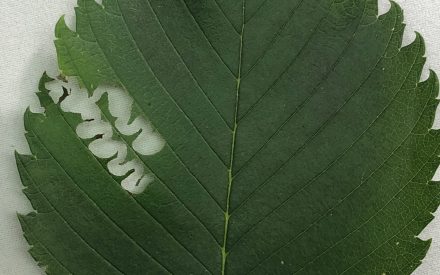 Elm Zigzag Sawfly
Elm Zigzag Sawfly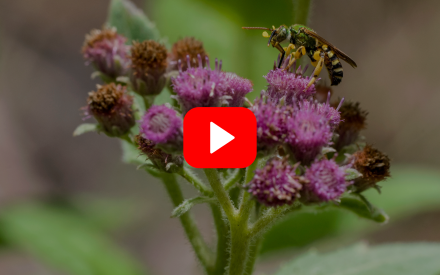 ▶ Watch: Pollinator Gardens: Plant Selection and Garden Care
▶ Watch: Pollinator Gardens: Plant Selection and Garden Care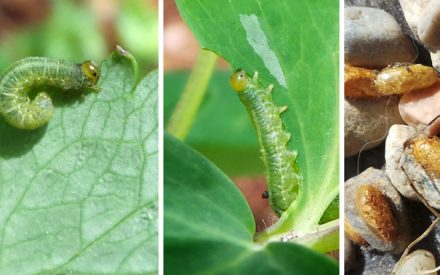 Strategies for Identifying and Managing Insect Pests
Strategies for Identifying and Managing Insect Pests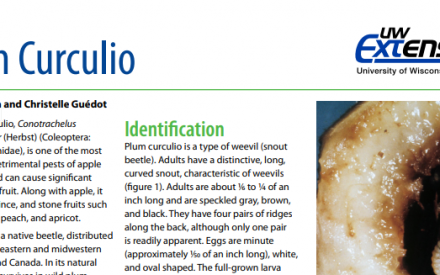 Plum Curculio
Plum Curculio


